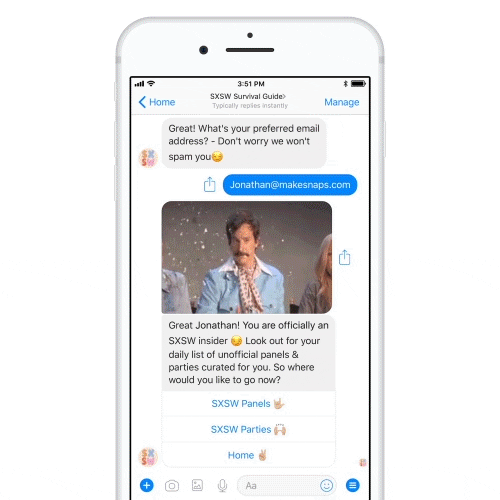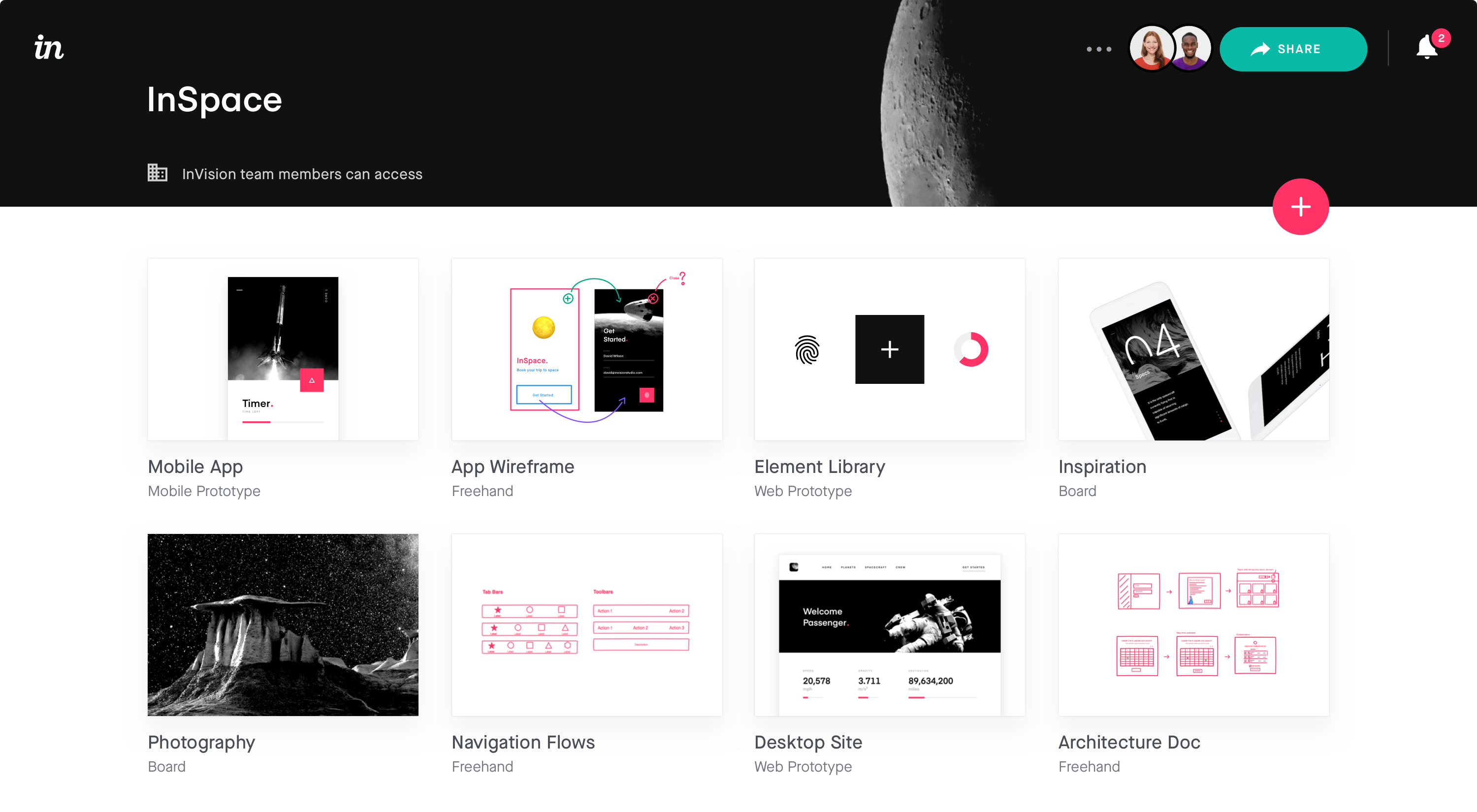No, the top growth hacking tool isn't just a giant sledgehammer. It might help you threaten a few people, get a few customers through fear. But that's not a long term viable solution. Believe me, we've tried.

According to Harvard Business Review, it can be 5-25% more expensive to attract new customers than retaining existing ones. So, reducing churn can be far less costly than new user acquisition but also provide a sustainable growth model. This has led to many experienced growth marketers to say that this is growth hacking 2.0.
To keep customers, you have to first acquire them. As a small business, this can be difficult, with a limited budget and tight resources. This means that you need to be smart about what tools you invest in, and what you spend your time on. Growth hacking, and tools, can help you in both departments, acquisition and retention.
So, let's jump in. Starting with:
1. Chatbot marketing
Chatbots automate all the disruptive, time consuming processes that come with the initial conversations customers have.
A chatbot means that you no longer have to ask for the email address of the visitor, as the bot already knows who the user is, and allows you to message them. Instead, your team can focus on delivering value and leading the visitor from awareness, to interest.
So, chatbots essentially eliminate the email sign up process. Then, you can segment the audience to speak to each individual's needs. Plus, bots are great at pushing personalised content to the specific visitor.
Speaking of personalised content, every action that a prospect takes with your bot is an opportunity to learn and optimise. With each move, they're telling you what they are interested in, and under what circumstances they will buy.

They're also a way to educate your customers, and provide extra value during a conversation. You can nurture and enhance your relationship with a consumer by providing extra info in a personalised way, and even direct them towards existing resources they might not be familiar with.
You can programme your chatbot to build a customer profile and use this data to send the consumer on an educational journey. These profiles can be used to make tailored recommendations through a chatbot.
The bot can point out a new product or software that is relevant to the job description of the customer, or their previous behaviour. If your customer is gaining from your interactions, through acquiring knowledge, they will be sure to stay in contact.
2. SMS marketing
Customer preferences have shifted dramatically in the past few years. This is where some clever marketing tactics have to come in. So, text messages have become a preferred strategy among growth hackers; it's cheap, easy, and effective.
Text messaging allows you to build an audience which is both engaged, and trusting in the sender. It's all about providing personalised marketing that appeals to the audience, using the right data from the start of the communication.
Then, think automation. It's vital to have the most effective tools to automate essential and tedious marketing tasks.
Remember: 42% of millennials check their text messages 10x or more per day.
SMS is easy to track, which is a huge benefit for growth hackers, as it offers a good deal of transparency to see what is working, and what isn't. Then, you can change your marketing based on this insight. It's important for growth hackers to be responsive, and agile, with their limited time and resources.
This can look like tracking what links are clicked the most, and what customer has clicked the link. So, you'll have access to highly specific data bout your audience's behaviour and interest. Then, it can be used as a business case on how the campaign is performing.
Plus, the ROI of text message marketing is impressive. You'll tend to see a good ROI on investment in the space. In fact, the average text message costs just $0.02 to send. Think of it like this: if you send a campaign to 100,000 clients, each of which are targeted and engaged, it'll only cost $2000. That means not many conversions are needed to break even. On top of this, a usual SMS campaign will convert between 5% and 30% of receivers.
Text message marketing can be used to interact with customers in a number of different ways, including:
- Welcome messages for new customers
- Personalised offers
- Booking or purchase confirmations
- Billing and payment reminders
- Event notifications
- Contests
- Promos and discounts
- Up-sells
- Coupons, vouchers, and offers
- Order, tracking, or delivery updates
3. Email Finding Tools
Quite a lot of the best prospecting is done with the help of email finding tools. You just need the name of the customer and the company they work for, and you'll have their email. Simple as.
You'll see both enterprises and small businesses collecting lists of emails in this way. They'll then upload them into their email marketing software, and start running automated drips at them until they convert.
A marketing tool for email search and verification can help users find and verify professional emails from company websites. This means being able to find accurate contacts and personalise mailing lists, as well as the capability to set up targeted email campaigns by extracting email addresses from any website.
Some tools even offer the ability to upload files to verify a list of email addresses, and if the growth hacker can't find the exact address from the domain search, they can still guess the email pattern of the targeted company.
4. Automation and Data Scraping
Website scraping has been used by digital marketers way before the term was even coined. Back in the day, web scraping involved manually copy-and-pasting information from websites into spreadsheets, to analyse the data and see where the leads where, and how they could be reached.
The process remains relatively similar today, expect that growth hackers now have access to far more information. Automated web scraping helps you to extract data from HTML, which will letting you see what the internet cares about and how to focus your marketing. This can be an effective way to increase your prospect generation.
It's also possible to set web scrapers to look up specific information, from SEO keywords to monitoring prices, and engage in social listening. Being able to see statistics, trends, and information on what is happening across your industry space is useful in future planning, as you'll be able to map what people are interested in, and what they want.
So, the practise of web scraping can be a quick and inexpensive way to get a competitive advantage.
Web scraping can also help in developing strong leads. Once you know your target audience, and where they live online, its possible to scrape the data and find out how to keep in touch with them. So, it's all about finding what you need, and achieving these aims. This is why growth hacking and data scraping are so easily aligned.
5. Design and Collaboration
Collaboration tools are hotter than ever. Distributed and fragmented teams are more common, with hybrid and remote working becoming more and more popular. So, collaboration tools make it easier for your design team to get feedback and approve projects with ease. Of course, these tools aren't just restricted to your design team, however the visual aspect of creative collaboration can often be the hardest hit with spread-out-across-the-globe teams.
Some tools can be created specifically for designers, while others can serve as a concept crafting whiteboard.
Tools such as InVision, for example, allow for visual collaboration. These tools and apps can turn your designs into fully active prototypes, complete with gestures, transitions, and animations. Clients can even provide feedback in the form of comments on the designs, and they can be kept up to date with the project's progress in real time.

Other tools, such as Slack, can help improve communication within your team, and allow you to work remotely but still stay in touch. This means you have access to talent beyond your own geographical limitations, or can even utilise freelancers easily, something common to start-ups and small businesses.
These collaboration tools are a good solution for clear, real-time communication that keeps everyone in the loop.
6. Gathering Feedback
When you keep measuring client feedback, you'll have the chance to improve your product or service, and become increasingly competitive within your space. It also places your company's strengths and weaknesses at the forefront, giving insight into the customer's problems, which can lead to to ways to improve customer satisfaction.
Luckily for you, there's plenty of tools you can use to gather customer opinion and insight.
For example, you could use a survey and feedback gathering tool, such as Feedier, in order to measure real-time satisfaction, get visual data-insights, and engage different audiences with impressive experiences.
We all know gamification works. In fact, 70% of global 2000 companies use gamification in some way. Plus, 50% of start ups use gamification. So, you could use engagement forms that have elements of gamification, or even create interactive forms and digital experiences. From these, you can measure satisfcation, ask interactive questions, create loyalty with rewards, and push an action to close the loop.
The goal of using these tools is to get more responses, turn those responses into insights, and provide the ability to take action.
7. Influencer Marketing
Whether you're for or against it: influencer marketing can be considered a growth hack, and often is seen in this way by marketing departments. Remember, growth hacking is all about the low costs and high rewards, something which influencer marketing provides.
Word-of-mouth marketing has always had a great influence on consumers, and plays a key role due to the credibility it provides The arrival of the internet and social network, and the prevalence, of mobile communications, has led to an increase in the effectiveness of word of mouth. So, it might not be high tech, but social media and its influencers can be a really impactful growth hacking tool.
But you don't even have to go for the big names. Sometimes, your influencers can be the people who use and love your product the most - your customers. Getting your clients to create content for you can increase your brand's reach and trustworthiness.

8. Conversion Optimisation
There's a few tips and tools you can use, as a growth hacker, in order to improve the conversion rate of your website. These can include:
- Optimised landing pages. A good landing page should focus on conversion. This might be a purchase, capturing a lead, receiving a request for information. You have to provide the necessary information, whilst also making it clear where the call to action is, too.
- Easy-to-share content. Make it easy for your customers to share all that content you've put time and effort into. If you have a blog, place visible sharing buttons, and don't be afraid to push users to share your content.
- Conduct A/B tests. Tools like Google Optimise make conducting experiments a lot easier. If you think there's an element that doesn't work on your website, perform A/B tests. This is the same with your email campaigns. It might be as easy as changing the main image, or subject line.
9. Social Media Automation
Brands are spending more and more time and money on social media. Going viral, and earning recognition, are examples of social media hacks in the space.
For a growth hacker, it is important to know how to utilise an unconventional set of acquisition techniques and the right stack of tools, in order to best use social media in your growth hacking. So, this might be as simple as using an automation platform, to schedule posts.
You might also consider a social media distribution tool. Examples such as SocialPilot, eases your growth hacking by allowing you to connect as many social accounts as you need or want for your customers in a single place. You can post on multiple social media platforms, including Facebook, Twitter, LinkedIn etc.

These tools can save you time spent on scheduling and sharing posts on different platforms, so you can focus on increasing your engagement and traffic.
Content marketing tools can also allow you to curate the newest interesting content, so you can directly post it on your social media profiles. All you need is a keyword, and then you can be presented with a similar list of keywords and social handles.
When you select a handle or keyword from the list, you can find relevant content pieces such as blogs, videos, or guides. You can even get a list of influencers based on your search.
Another example of a social media tool can be a social media engagement tool. If you want to run multiple promotions from a single point without hassle, then this might be the space for you. A social promotion tool can let you run sweepstakes and contests, and even create polls across various social channels.
Social media lead generation tools might also be of interest to a growth hacker. These will allow to create such things as contests, which are an engaging way to create a buzz around your brand and boost your following. With a tool in this area, you can decide whether your goal is to increase engagement or gain more leads, and plan accordingly. Then, you can offer extra winning chance to entrants on referring a friend, or just ask for their information such as phone number or email address.
10. Effective Landing Pages
Like we've mentioned before, creating a high converting landing page can be one of the most rewarding, and frustrating tasks for any growth hacker.
This is because there's an unlimited number of variables that go into why a page converts or not. At any given time, there can be issues with your traffic, page design, copywriting, images, etc. etc.
A way to make things easier for you, and your customers, is to use tools to create a smoother experience. For example, you might consider an auto-select form fields. Remember, the easier you make it for prospects to convert, the more likely they are to convert. So, cutting out a few extra steps but auto-filling fields makes the process more enjoyable.
In the same vein is pre-filled formed fields. Knowing it easier to convert will make it more likely people will, so we can assume that filling out parts of the form for clients can be highly effective.
Countdown timers can also transform a landing page. People react to impulse and psychological triggers, so these tools can be highly effective. A countdown timer can tap into the human fear of missing out, and instil a sense of scarcity into an offer.
Click pop-ups can utilise elements from both these examples. Visitors can be reluctant to fill out a form since they know in advance how many form fields there are, and what the potential time investment there might be. One trick is to make conversion easier by adding a click pop-up button instead of a form. This makes it easier for users to convert in stages: 50% of the way by clicking on your CTA then another 50% by filling out your pop-up's form.
